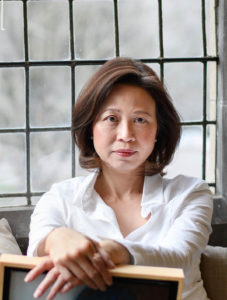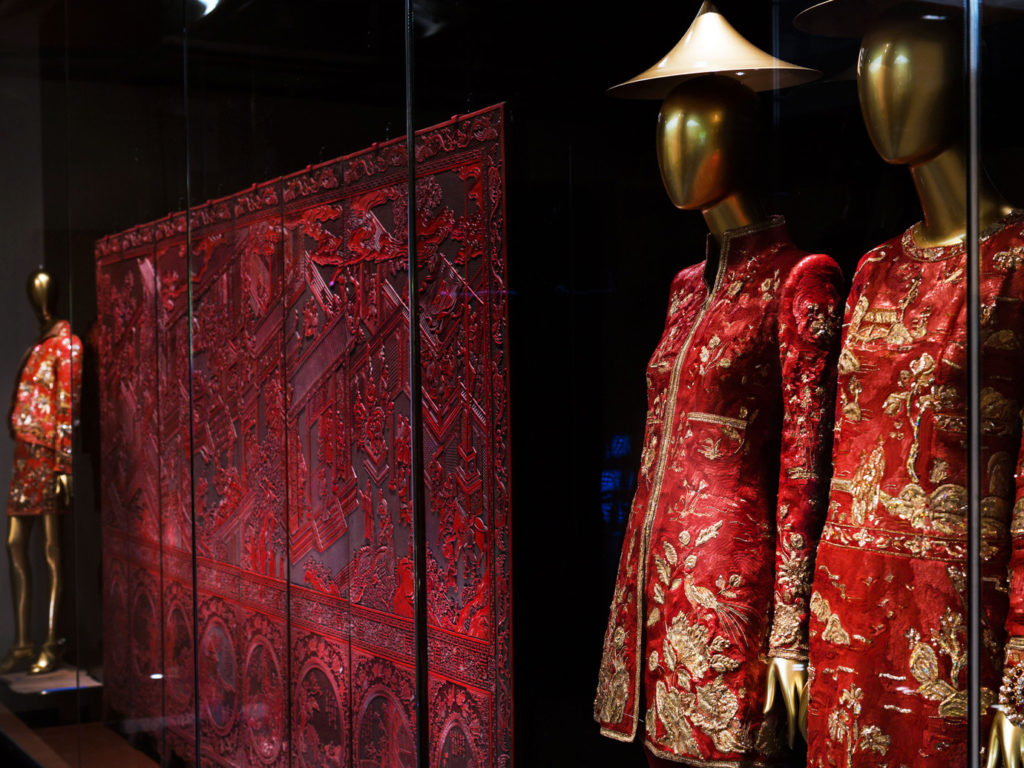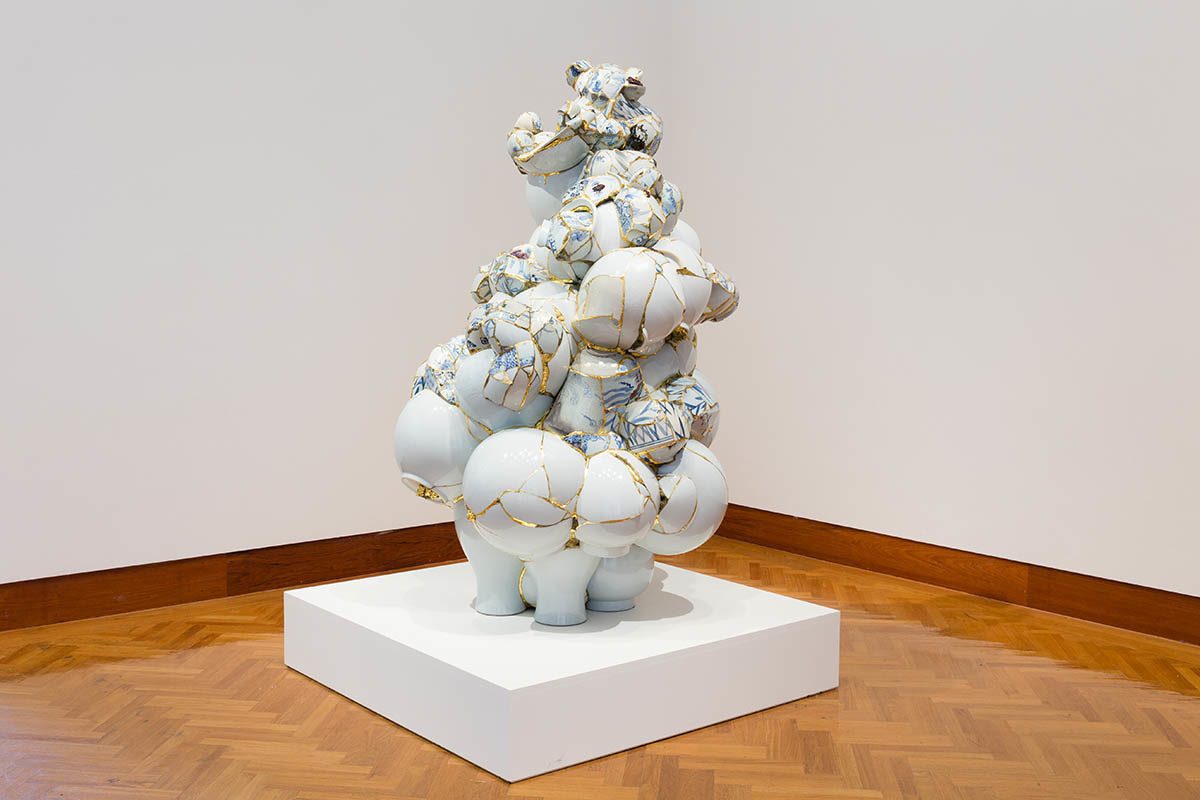In her latest book, Ornamentalism, multidisciplinary scholar and Princeton professor Anne Anlin Cheng focuses on the urgent, albeit often overlooked subject of Asiatic feminism. Intending to fill a conceptual void, Cheng addresses the centuries-old Western tradition of equating Asiatic femininity and excessive ornamentality. “Ornamentalism, for me, is not just about having a person made into a thing, which is oftentimes something that we think of around the history of race. But it is also about the condition of life and possible intimacy within objectness. It is about how personhood might be indebted to objects,” she said during her recent lecture at the GSD: “Monsters, Cyborgs, and Vases: Apparitions of the Yellow Woman.”

Cheng describes ornamentalism as a “theory of being.” It focuses on the means by which the personhood of the “Yellow Woman” is construed through the artificial and the ornamental. “These processes happen more often and more visibly than we think,” she explained in the lecture, “through the minute, the sartorial, the decorative, the prosthetic, and design.” In a recent conversation over Zoom, she reflected further on ornamentalism, the importance of finding an unorthodox vocabulary to examine racialized gender oppression—especially in the case of the Yellow Woman—and why we must radically reconsider what is beauty and what is human in a broken world.
What inspired you to begin writing about the Yellow Woman?
The issue has been at the back of my mind for a very long time. But the need to write a book and do the work came after I saw an exhibit at the Met in 2017—China: Through the Looking Glass. I was stunned by its unabashed Orientalism. At the same time, I also found this show mesmerizing. Not only because it was so sensorially rich, but also because of the intense objectification and the insistence of Asiatic femininity as an idea and presence in the show.
I read all of these articles about it (there were a lot of protests). And the thing that struck me was that we’re looking at this expansive history of the representation of Asiatic femininity, but the way we have to talk about it is incredibly limited. I mean, critiques of commodification, objectification, or fetishization are all accurate critiques. But we have been saying the same thing for decades and we should have a much richer vocabulary to think about these issues. This phenomenon is what got me started on this project. And once I delved into it, it became very clear to me that the association between Asiatic femininity and ornamentality is philosophically, artistically, and representationally, deep and expansive.

How do you define the Yellow Woman?
I find the term very painful. I’m using it deliberately because I wanted to denote the racialization of Asiatic women, one that is quite obvious and yet very underdiscussed. I’m also talking about a history of representation that is completely indifferent to what “Asian” or “Asian American” really means. What I’m talking about is an American view of Asiatic femininity.
You’ve spoken about invisibility as a form of oppression. What does that look like in practice?
I think Asian Americans and Asians in America suffer from an ambivalence problem. They are invisible since they rarely fall into the racial calculus unless a crisis happens (like a virus). They are often seen as invisible through discourses such as the model minority discourse, where people say, “They’re all doctors and lawyers anyway, so what do we care?” And at the same time, they’re hypervisible as subjects of difference. They look racially different. And this is part of the reason why there’s been such a spike in anti-Asian violence across the country. At the same time, Asian American women are super visible because of what is considered an aesthetic privilege, while they’re also being evacuated under this language. We think of oppression as something embodied—as it can often be— but it is also about erasure, a kind of violence that’s harder to talk about because it’s not as visible.
You’ve said that you view ornamentalism as a form of survival; can you expand on that?
I think part of the problem with naming something as a stereotype is that in naming it, oftentimes there’s a kind of assumption that we know it only too well: “This thing again. Terrible. We know it. Let’s turn away from it.” And I think when we do that, we fail to see all kinds of alternative possibilities for agency and what other kinds of survival might be at stake. And so my approach is I don’t want to simply decry objectification. I want to first acknowledge it. I want to acknowledge its profound philosophic and historic material history and imaginative history. But then I want to go on to ask what happens to the person that is actually still living as a person underneath that objectification. So I think what we need is something in between—a much more nuanced and expansive look at what constitutes surviving. If the Asiatic woman has lived for thousands of years under the terms of this objectification, how do we think about her as actually continuing to have a certain form of ontology?
During your lecture, you said, “We must radically reconsider what is beauty in a broken world, as well as what is human.” Why do you think discussions about aesthetics and beauty are essential to subvert systems of oppression?
They don’t usually go together, right? Aesthetics and politics. But the aesthetic often expresses the political, and it can be a place to undo the political in certain ways. For instance, there are areas in which beauty remains uncontested. That is to say, I can talk about the beauty of a flower, a painting, or a small child, without too many people getting upset. They might not agree, but no one is going to come and yell at me about it. Yet, when it comes to a racialized person, and particularly women, beauty is really fraught. It is something they’re historically excluded from. And our instinct is to correct it by offering a positive stereotype (e.g., “Black is beautiful”), but that doesn’t challenge the fundamental logic. I’m not interested in judging who is or isn’t beautiful. I’m interested in how beauty is a site of value and affirmation and how that gets inflicted differently when it comes to race and gender.
I also think aesthetics—particularly art and literature—have a way of articulating certain things left out in legal or sociological discourses about race. Aesthetics is a language about the ineffable and the contradictory. It makes room for the historical, the imaginative, and the phantasmagoric. What people don’t realize is that race and gender are such complicated phenomenons that straddle the material and immaterial, that we desperately need the realm of art and literature to help with a vocabulary.
*This interview has been edited and condensed for length and clarity.
